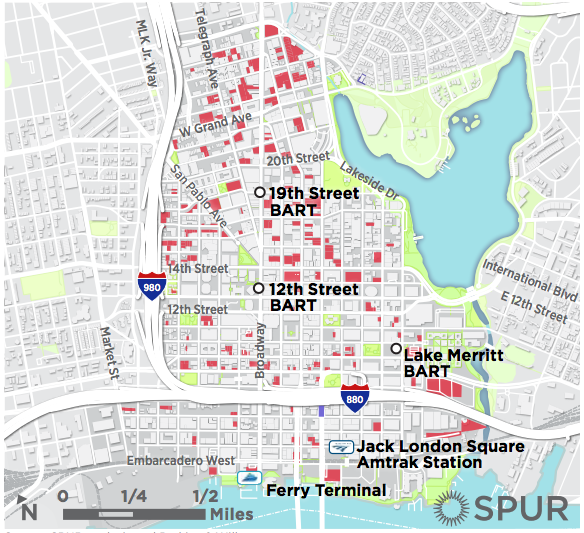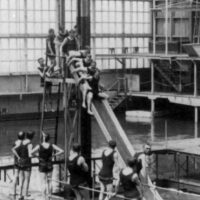What’s Going On: Tensions, and Solutions, in a Changing Oakland

Launching September 13, City Rising is a multimedia documentary program that traces gentrification and displacement through a lens of historical discriminatory laws and practices. Fearing the loss of their community’s soul, residents are gathering into a movement, not just in California, but across the nation as the rights to property, home, community and the city are taking center stage in a local and global debate. Learn more.

On the night of July 7 in 2016, more than 2,000 people marched peacefully down Oakland’s Broadway and onto Interstate 880 to protest police killings of innocent civilians in other parts of the country. The event got local coverage but not much else, given the horror in Dallas at a march that tragically turned out very differently. But it’s worth noting because there’s a lot of tension in Oakland, and in the recent past, similar protests didn’t end as well. That this march was peaceful shouldn’t cause us to overlook it. If anything, it’s even more important for those of us who love this town to pay close attention to the reasons people were marching — and to work as hard as we can to fix the causes.
Oakland is changing, and many who have lived here for a while are nervous about that. They’re nervous that when wealthier people move in, their neighborhoods will change and they might not be so welcome anymore. As Rebecca Solnit has observed about San Francisco, gentrification — which is what we are talking about here — can lead to “a sense of being pushed out, devalued, criminalized and threatened.”
New construction, and lots of it, is critical if we’re going to get ourselves out of the current housing shortage. But the fear people feel about it is legitimate. In the last year, noise complaints have been called in against a church choir in West Oakland and drummers in the park at Lake Merritt. Choirs singing loudly and people drumming have been standard practice in these places for decades. In other cities, when displeasure toward long-time residents has led newcomers to call the police, the result has sometimes been fatal. These clashes are an effect of gentrification. They are real, and our cities need real solutions.
When low-income people are evicted, pressured or policed out of their neighborhoods, where are they supposed to go? One place we know they won’t be going is to the more affluent parts of Oakland. Even though market-rate housing is now being built in less prosperous parts of town, the reverse is not true. Fixing that discrepancy would be a major step in the right direction. There’s lots of room to grow in Oakland, and growth is desperately needed to accommodate everyone who wants to live here. If we began building affordable and middle-income housing across a wider swath of the city, we would be giving the children in those families the access to schools that the Supreme Court has called for. We would also be bringing a level of population density that would enable neighborhood businesses to grow and thrive. A good place to start building would be on church, synagogue and temple properties. SPUR has identified 45 such properties east of Interstate 580 that together make up more than 2 million square feet of un-built-upon land.
Speaking of lots of room, the city should take a close look at opportunities on International Boulevard, MacArthur Boulevard, San Pablo Avenue and Telegraph Avenue. On International, for example, we estimate that there are 47 acres of unbuilt land and more than 400,000 square feet of vacant storefronts. Building housing and helping to attract businesses to these place would make these neighborhoods — and all of Oakland — better places to live, work and play.
For this to work well, though, we need to give Oaklanders better ways to get around, and to do that we need to recreate the sort of transit network that Oakland once had and was justifiably proud of. Bus rapid transit is coming to International Boulevard, and that’s a good start. It’s just a start, though. The East Bay once had the second-most extensive streetcar network in the country after Los Angeles. We need to start thinking about how to rebuild these connections and make all of the Bay Area — and its opportunities — easily accessible to all Oaklanders.

Some parts of the city have resisted such development, but we can’t expect low-income neighborhoods to disproportionately bear the burden of change. Oakland is currently the eighth-largest city in a state whose economy is the sixth largest in the world — but it can’t afford to provide many of the basic services its citizens need and expect. Voters will be asked to support a number of important bonds in November to fund affordable housing and infrastructure upgrades, but these won’t cover all of the city’s many ongoing needs. To truly thrive over time, Oakland needs a more vibrant economy, a stronger tax base and more people. And to get there, the costs of change will need to be borne equally.
For Oakland to get the tax base it needs, its downtown should become much more vibrant. In our report A Downtown for Everyone, we recommended that the city center add a lot more residents and a lot more jobs. But it needs to add them in a way that doesn’t lead to those who have been there all along getting kicked out. Preventing existing SRO hotels from being converted to market-rate housing would be one step in the right direction. Another would be to focus growth on the 40 acres of vacant land and parking lots that currently exist downtown. If Oakland were to allow buildings on Broadway, Telegraph Avenue and San Pablo Avenue to be taller, and concentrate new building on the vacant land and parking lots, there would be room for a lot more jobs, people and economic activity without displacing what is already there.

As part of the downtown planning process now underway, the Oakland Planning Department is seeking consultants to help develop a social equity strategy that will “address structural inequality through the land use and other mechanisms” in its downtown specific plan. That is potentially a good idea, as long as whoever does the analysis keeps in mind that we can’t have an equitable city if the city doesn’t have the revenue to provide support and services to its people.
The most important key to our dream for Oakland is that the city needs to be safer — for everyone. And that brings me to the police department. We all know, or at least think we know, what has been going on there. Whatever has happened, we need to remember that there are some people, both within the department and outside it, who are trying hard to make OPD better, and they deserve our support. Recently researchers from Stanford University’s Center for Social Psychological Answers to Real-World Questions (SPARQ) released two reports on the Oakland Police Department. These were the result of a two-year project in which the Stanford team analyzed 13 months of OPD police-stop data. The project offers 50 specific recommendations for improving the practices of the OPD, including improving feedback channels to the department, training officers in social tactics and increasing opportunities for positive community contact.
Reform of the OPD will be both difficult and important, and the mayor and city administrator are rightly prioritizing this. At the same time, we can’t lose sight of the fact that there are many officers who are from the community and care deeply about Oakland. These are the officers who are hard at work trying to protect lives in the neighborhoods that are currently under strain from so many directions. When we encounter them, it benefits no one to treat them with anything less than respect. Similarly, we mustn’t lose sight of the fact that, unlike in recent years, 2,000 people marched down Broadway in protest of police killing of civilians — and they did so peacefully. There is a lot of pain and tension in Oakland, but people also want to find constructive solutions. We all need to work together to make that happen.
This article was originally published on July 14, 2016 on Medium.com. Permission provided by SPUR Oakland Director Robert Ogilvie.
Top Image: Black Lives Matter activists in Oakland protesting against police brutality also on July 7, 2016. | Robert Miller/Flickr/Creative Commons
If you liked this article, sign up to be informed of further City Rising content, which examines issues of gentrification and displacement across California.


